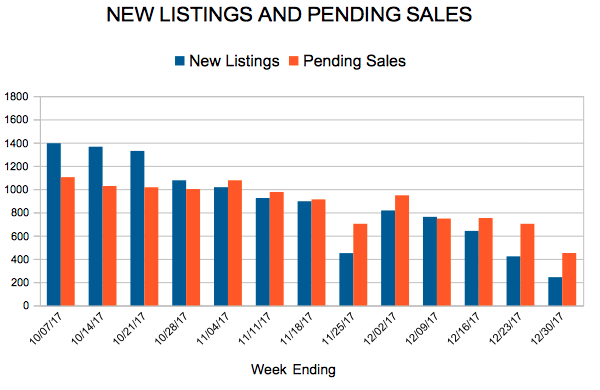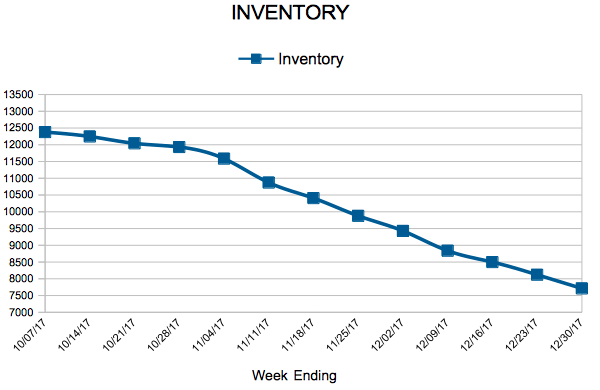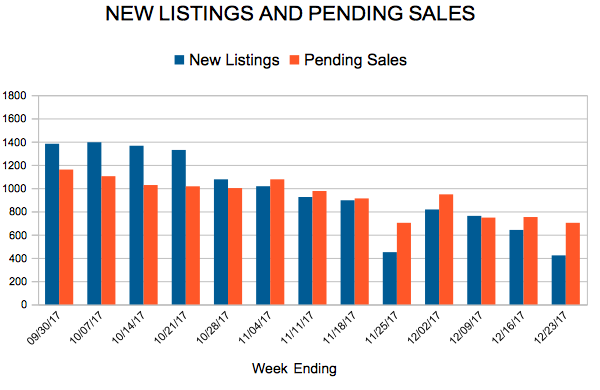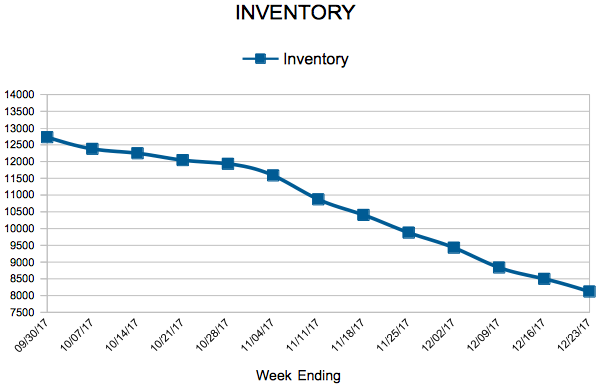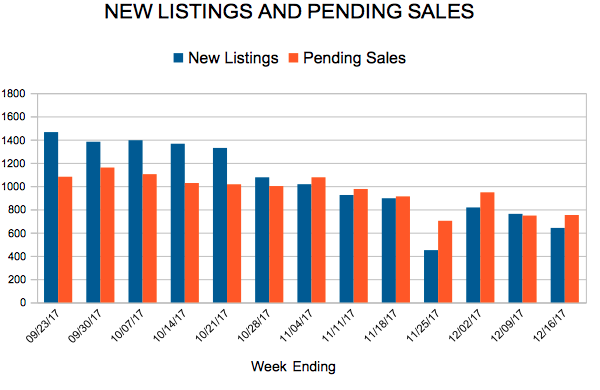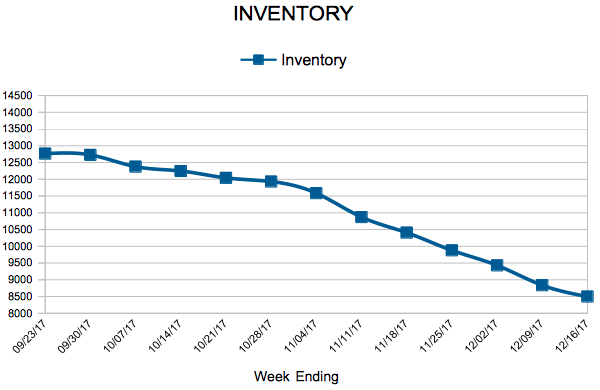Inventory
Weekly Market Report

For Week Ending December 30, 2017
As we close the books on 2017, it is clear that there is an ongoing national housing shortage. Year-over-year inventory levels have been down in most markets for several years now, and that trend is expected to persist in 2018. Even if there are occasional increases in the number of homes for sale from week to week, home supply is too low to achieve a balanced market. That said, consumers are most definitely purchasing homes quickly and often above asking price. Demand is strong, and there is plenty to feel optimistic about in 2018.
In the Twin Cities region, for the week ending December 30:
- New Listings decreased 37.7% to 243
- Pending Sales decreased 8.7% to 451
- Inventory decreased 24.6% to 7,712
For the month of November:
- Median Sales Price increased 6.5% to $245,000
- Days on Market decreased 11.1% to 56
- Percent of Original List Price Received increased 0.8% to 97.4%
- Months Supply of Inventory decreased 21.7% to 1.8
All comparisons are to 2016
Click here for the full Weekly Market Activity Report. From The Skinny Blog.
New Listings and Pending Sales
Inventory
Weekly Market Report

For Week Ending December 23, 2017
As is usually the case this time of year, housing activity will slow down for a few weeks during the last of the 2017 holidays. Shrewd buyers and sellers will take advantage of this slower time of year to make meaningful deals, especially ahead of perceived or real changes that are due to take place in 2018 as regards taxes, mortgage rates, housing affordability and other factors.
In the Twin Cities region, for the week ending December 23:
- New Listings increased 14.4% to 422
- Pending Sales increased 8.0% to 702
- Inventory decreased 23.8% to 8,120
For the month of November:
- Median Sales Price increased 6.5% to $245,000
- Days on Market decreased 11.1% to 56
- Percent of Original List Price Received increased 0.8% to 97.4%
- Months Supply of Inventory decreased 21.7% to 1.8
All comparisons are to 2016
Click here for the full Weekly Market Activity Report. From The Skinny Blog.
Mortgage Rates Drop
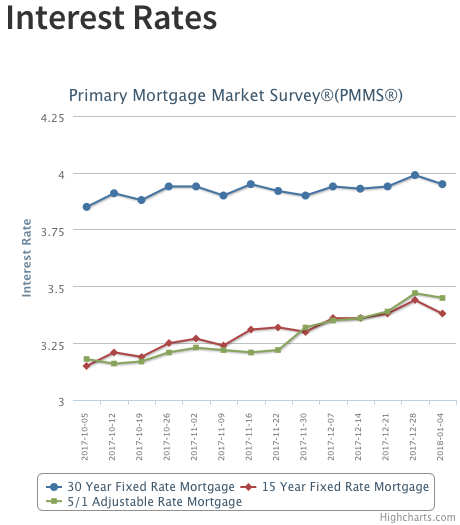
Treasury yields fell from a week ago, helping to drive mortgage rates down to start the year. The 30-year fixed-rate mortgage fell 4 basis points from a week ago to 3.95 percent in the year’s first survey. Despite increases in short-term interest rates, long-term interest rates remain subdued. The 30-year mortgage rate is down a quarter of a percentage point from where it was a year ago and the spread between the 30-year fixed and 5/1 adjustable rate mortgage is the lowest since 2009.
Mortgage Rates Move Higher
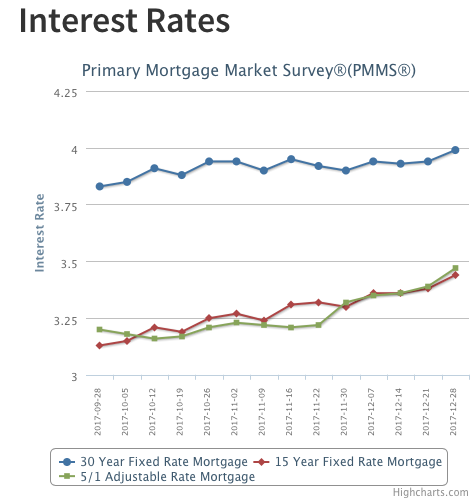
As expected, mortgage rates felt the effect of last week’s surge in long-term interest rates in the final, shortened week of 2017. The 30-year fixed mortgage rate increased 5 basis points to 3.99 percent in this week’s survey. Although this week’s survey rate represents a five-month high, 30-year fixed mortgage rates are still below the levels we saw at the end of last year and early part of 2017. Mortgage rates have remained relatively low all year.
New Listings and Pending Sales
Inventory
- « Previous Page
- 1
- …
- 97
- 98
- 99
- 100
- 101
- …
- 153
- Next Page »

